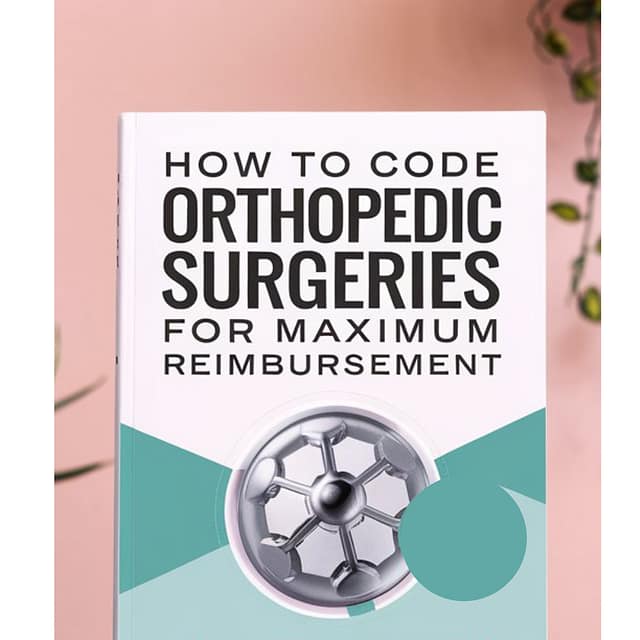
Imagine successfully performing a complex orthopedic surgery, only to face a reimbursement denial due to a small coding error.
Frustrating, right?
The complexities of orthopedic coding are enough to keep any healthcare provider up at night, worrying about the financial stability of their practice.
If this sounds familiar, you are not alone. Many US orthopedic surgeons face significant medical billing and coding challenges, often leading to revenue loss and operational strain.
Orthopedic surgeries are some of the most complex procedures, and even small errors in orthopedic medical billing can significantly impact your revenue.
But there’s a solution: Outsourcing medical coding and billing agencies like EZ Settle Solutions that ensure accurate reimbursement and improved financial health.
At EZ Settle Solutions, we understand your concerns and are here to help. In this blog, we will explore essential aspects of orthopedic surgery coding to ensure your practice receives the reimbursements it deserves. Let’s dive into how proper coding can make all the difference.
Orthopedic surgeries involve treatments and procedures related to the musculoskeletal system. Correctly coding these surgeries is essential to reflect the complexity and extent of the procedures performed. The primary coding system used for orthopedic surgeries is the Current Procedural Terminology (CPT), which includes specific codes for different types of surgeries.
Understanding how to choose the appropriate code based on the surgery performed will not only help with accurate Orthopedic Medical Billing but also ensure your claims are processed smoothly.
CPT codes provide standardized identifiers for orthopedic surgeries. These codes must accurately describe the surgical procedure performed.
Some commonly used CPT codes in orthopedic surgery include:
Some additional commonly used codes in hand surgery include:
Carpal tunnel release procedures have different CPT codes depending on the technique:
Bundling refers to combining services under a single code when those services are considered part of the primary procedure.
For example:
Understanding the bundling of codes is crucial to avoid billing for services that are already included in the primary procedure, helping prevent claim denials, and ensuring accurate reimbursement. Partnering with Medical coding and billing agencies like EZ Settle Solutions can always be the best option to reduce claim denial and accurate reimbursement.
Billing for orthopedic surgical repairs can be complex due to the variety of procedures involved. Whether you are repairing a tendon, bone, or ligament, accurate orthopedic medical billing is crucial to ensure full reimbursement.
Here are some key guidelines to follow when medical billing for orthopedic repairs.
The first step in Orthopedic Medical Billing for repairs is selecting the right CPT code that corresponds to the specific procedure.
For Example:
Make sure to match the procedure precisely to the corresponding CPT code to avoid claim denials.
Modifiers provide additional information about the surgery performed. They clarify if multiple procedures were done, if the procedure was bilateral, or if it was a distinct service.
Key modifiers include:
Using appropriate modifiers ensures accurate orthopedic medical billing and helps avoid underpayment.
Detailed documentation is essential in orthopedic repairs. The surgical notes must include all relevant information such as the exact nature of the injury, the procedure performed, and any complications or special circumstances. Clear and thorough documentation supports your CPT coding and minimizes the risk of claim rejection.
Bundling occurs when certain procedures are considered part of a larger surgery and cannot be billed separately. For example, during a fracture repair, a bone graft may be considered part of the primary procedure and not billable on its own. Be familiar with bundling policies to avoid billing for procedures that are included in the main surgery.
In addition to using the right CPT codes, pairing them with the appropriate ICD-10 diagnosis codes is essential. The diagnosis code must accurately reflect the condition treated, such as a fracture, dislocation, or ligament tear, to support the necessity of the surgical repair.
Different insurance payers may have specific guidelines or reimbursement rates for orthopedic repairs. Reviewing payer policies before submitting claims can help ensure that all services are billed correctly and that you receive full reimbursement for your work.
Errors in coding can lead to delayed or denied claims, which impacts your revenue cycle.
Some common mistakes include:
Are you doing same mistake for your orthopedic medical billing?
If yes then you need to connect with EZ Settle Solutions. We at EZ Settle Solution avoid such common mistakes and your claim denial by 40%, ensure accurate reimbursement.
By implementing these practices, your healthcare practice can streamline the orthopedic medical billing process and receive accurate reimbursements for orthopedic surgeries.
Contact us today for a free consultation!
Get started with EZ Settle Solutions!
Contact us at 346-335-4093 / info@ezsettlesolutions.com or schedule a free consultation to learn more about how we can assist you.